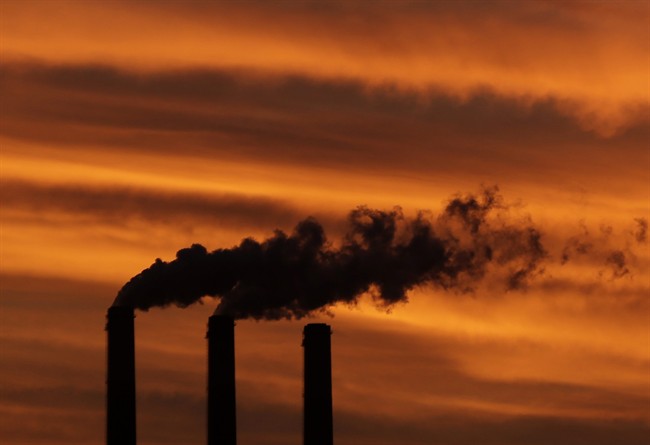TORONTO – Ontario’s Liberal government has released details of its cap-and-trade program, which is expected to increase the price of gas and homeowners’ natural gas bills, but gives some of the biggest polluters a four-year “holiday.”

The government is putting a price on carbon of about $18 a tonne and capping emission allowances at roughly 142 metric tonnes per year in 2017, when the plan rolls out, according to a series of details contained both in Thursday’s budget and in draft regulations posted by the environment ministry.
The cap is expected to decline 4.17 per cent each year to 2020, when the Liberals hope to have achieved a 15-per-cent reduction in greenhouse gas emissions over 1990 levels.
READ MORE: $30 Drive Clean fee may be dead but nearly all other Ontario government fees increasing
Cap and trade, which requires emitters to pay for greenhouse gases released into the air, is projected to generate $1.9 billion in revenue next year. Revenue from cap and trade will be dedicated to green initiatives, the government says.
The cost of gasoline will rise about 4.3 cents per litre and residential natural gas bills will likely go up about $5 per month due to cap and trade. But Environment Minister Glen Murray acknowledged that as the cap declines and pressure increases on industry to meet emissions targets, those costs to consumers “may” increase.

Get breaking National news
During that same time, some of Ontario’s largest industries get free allocations. The regulations list such facilities as Essar Steel Algoma Inc. in Sault Ste. Marie, Vale Canada Ltd. in Sudbury, and Imperial Oil’s Sarnia chemical plant.
“Big industry gets a four-year holiday on this and I think that’s a real problem,” said NDP critic Peter Tabuns. “I think there’s a huge perception that it’s unfair. If families and commuters have to pay right up front and big polluters get a four-year break, that doesn’t seem fair.”
READ MORE: Ontario budget 2016: Students get lower tuition; booze, tobacco taxes increased
Keith Brooks, with Environmental Defence, praised the cap-and-trade system and believes it will help the government meet its emissions reduction targets, but called it “regrettable” that large polluters get allowances.
Murray said 14 per cent of the heavy emitters have been excluded from paying for the first four years. The free allocations are to protect Ontario jobs in industries that are competing with jurisdictions without a carbon pricing system and to recognize industries that have made significant emission reductions already and need time to invest in new technology, he said.
“You don’t want to force them to be non-competitive,” Murray said.
“If a company relocates outside your jurisdiction, not only do you lose the jobs, but you’re not reducing emissions. You’re just relocating those emissions.”
READ MORE: Ontario budget 2016: Free post-secondary tuition for low-income families
Though the cost of gasoline and natural gas heating will rise, cap and trade actually drives the consumer price index down over time, Murray said, and people can end up paying less money under the plan “if you’re taking any reasonable number (of steps) to reduce your greenhouse gas emissions.”
But most people will not be able to rush out and buy an electric car or retrofit their homes, Tabuns noted.
The first carbon auction will take place in early 2017.







Comments